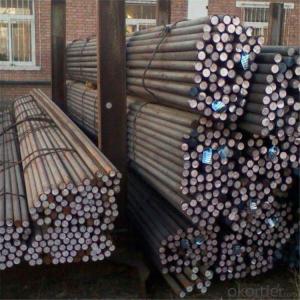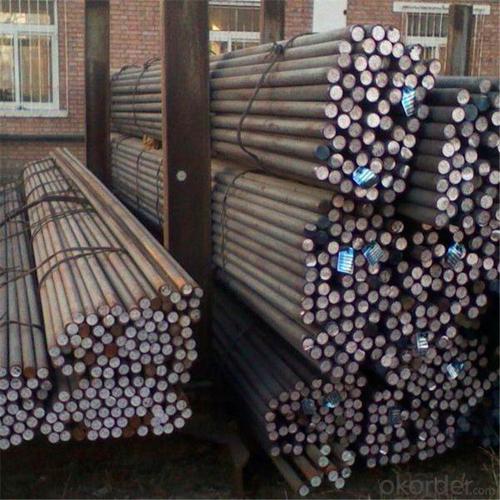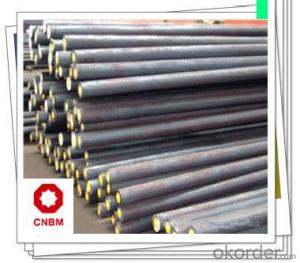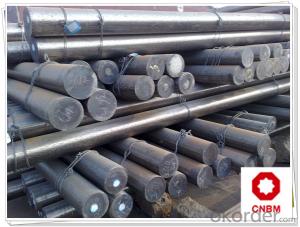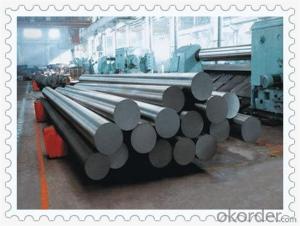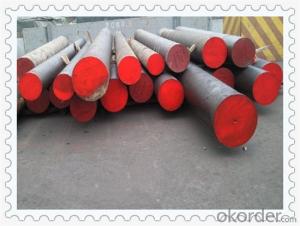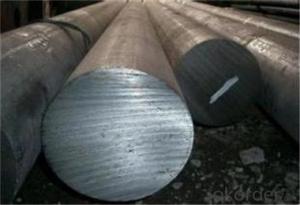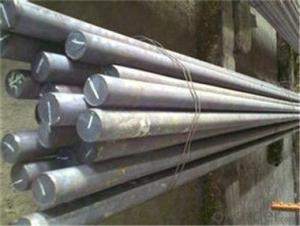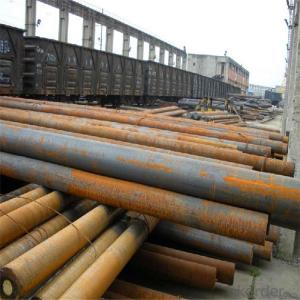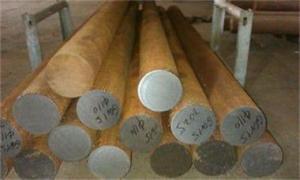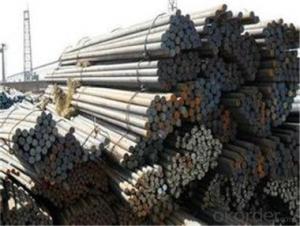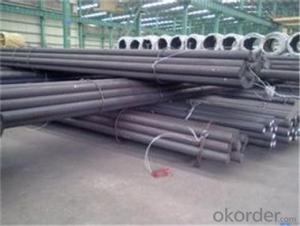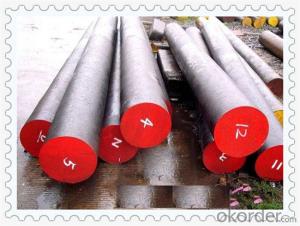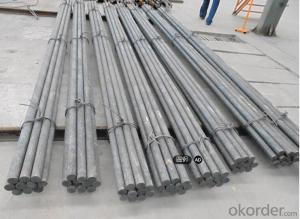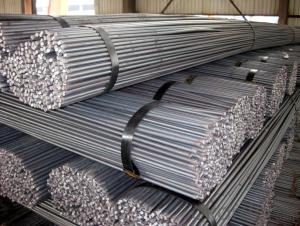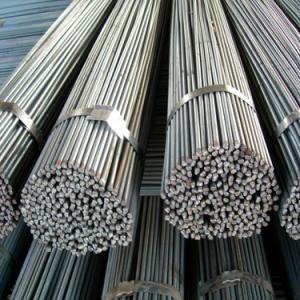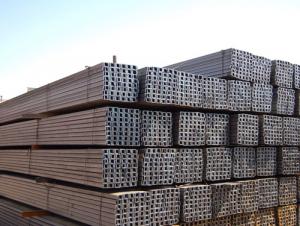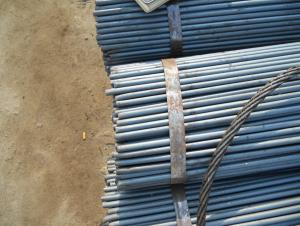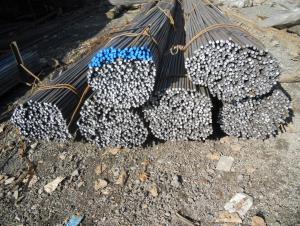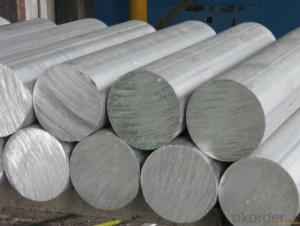CK45 Hard Chrome Plated Steel Round Bar
- Loading Port:
- Tianjin
- Payment Terms:
- TT OR LC
- Min Order Qty:
- 100 m.t.
- Supply Capability:
- 500000 m.t./month
OKorder Service Pledge
OKorder Financial Service
You Might Also Like
Specification
CK45 Hard Chrome Plated Steel Round Bar
Product Description of CK45 Hard Chrome Plated Steel Round Bar
1. Steel grade: ASTM4140, SCM440, 42CrMo, DIN1.7225
2. Length: 6M-12M
3. Diameter: 16mm-300mm
4. Product range: round bar, flat bar, square bar
5. Technique: Hot rolled, forged, cold drawn
Specification of CK45 Hard Chrome Plated Steel Round Bar
Material | SCM4140 | Round bar | Dia(mm) | 16-300mm |
Process | EAF + LF + VD + Forged + Heat Treatment (optional) | Length (mm) | Max 12m | |
Heat treatment | Normalized / Annealed / Quenched / tempered | Flat bar | Thickness(mm) | 8-500mm |
Delivery condition | Hot forged +Rough machined (black surface after Q/T)+ Turned (optional) | Width(mm) | 70-200mm | |
Test | Ultrasonic test according to SEP 1921-84 D/d | Length (mm) | Max 12m |
Chemical Composition of CK45 Hard Chrome Plated Steel Round Bar
C | Si | Mn | Cr | Mo | P | S |
0.38~0.43 | 0.15~0.35 | 0.75~1.00 | 0.8~1.1 | 0.15~0.25 | ≤0.035 | <0.04< td=""> |
Photo Show of CK45 Hard Chrome Plated Steel Round Bar
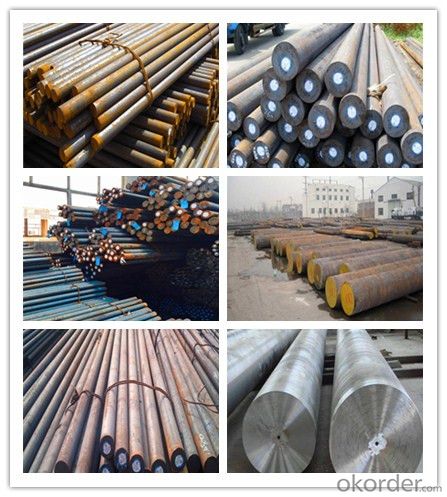
Packing and Delivery:
Packing in bundle package, or as customer's requirements.
Delivery Detail: 45 days after receiving the deposit.
Usage and Applications of CK45 Hard Chrome Plated Steel Round Bar
1. Steel round bar is used in a large number of architectural and engineering structures. Or it can be used in construction of plants for the production of steel house frames, high-voltage transmission towers, bridges, vehicles, boilers, containers, ships, etc.
2. And we can use this kind of product on the performance of the mechanical parts if the demand is not very high.
3. Some special material steel round bar can be used for main shaft of steamer, hummer shank, with big section and supper force.
Company Information
CNBM International Corporation is the most important trading platform of CNBM group.
Whith its advantages, CNBM International are mainly concentrate on Cement, Glass, Iron and Steel, Ceramics industries and devotes herself for supplying high qulity series of refractories as well as technical consultancies and logistics solutions.

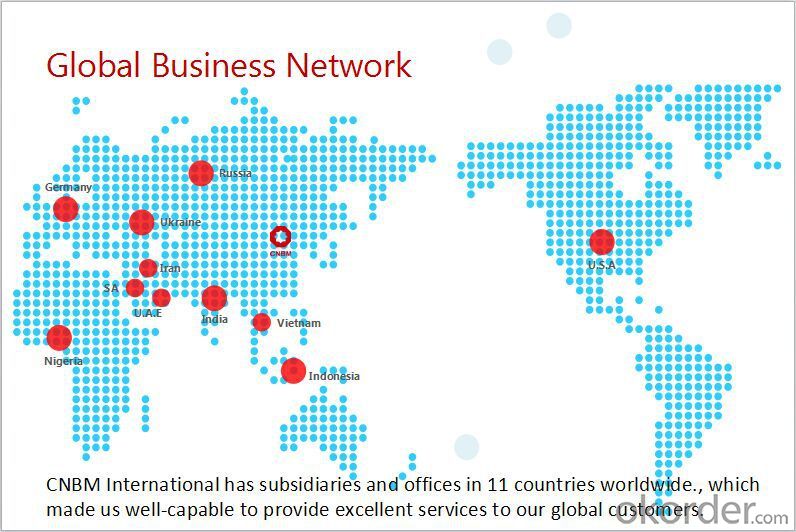
F A Q
1, Your advantages?
professional products inquiry, products knowledge train (for agents), smooth goods delivery, excellent customer solution proposale
2, Test & Certificate?
SGS test is available, customer inspection before shipping is welcome, third party inspection is no problem
3, Factory or Trading Company?
CNBM is a trading company but we have so many protocol factories and CNBM works as a trading department of these factories. Also CNBM is the holding company of many factories.
4, Payment Terms?
30% TT as deposit and 70% before delivery.
Irrevocable L/C at sight.
5, Trading Terms?
EXW, FOB, CIF, FFR, CNF
6, After-sale Service?
CNBM provides the services and support you need for every step of our cooperation. We're the business partner you can trust.
For any problem, please kindly contact us at any your convenient time.
We'll reply you in our first priority within 24 hours.
- Q: How do steel round bars compare to other materials in terms of strength?
- Steel round bars are known for their exceptional strength, making them highly desirable in various industries. When compared to other materials, steel round bars often outperform alternative options in terms of strength. This is mainly due to the unique properties of steel, such as its high tensile strength and toughness. In comparison to materials like aluminum or plastic, steel round bars offer superior strength and durability. Steel has a much higher tensile strength, which means it can withstand greater amounts of tension without deforming or breaking. This attribute makes steel round bars ideal for applications that require structural support or load-bearing capabilities. Furthermore, steel round bars exhibit excellent resistance to bending, shearing, and impact. This resilience allows them to withstand heavy loads, vibrations, and external forces, making them suitable for use in construction, automotive, and manufacturing industries. Steel's high strength-to-weight ratio also makes it an advantageous choice in applications where weight is a crucial factor, such as aerospace or transportation. Moreover, steel round bars can be engineered to possess specific properties, such as heat resistance or corrosion resistance, further enhancing their strength and versatility. By alloying steel with elements like chromium or nickel, it can attain resistance to rust, oxidation, and other forms of deterioration, extending its lifespan and maintaining its strength over time. In summary, steel round bars excel in terms of strength when compared to other materials. Their exceptional tensile strength, toughness, resistance to bending and impact, and ability to be tailored for specific applications make them a preferred choice in numerous industries.
- Q: How are steel round bars stored?
- Steel round bars are typically stored in a way that ensures their safety and easy access. One common method of storage is to stack the bars horizontally on a pallet or rack system. The bars are often bundled together and secured with straps or wire to prevent them from rolling or shifting. Another approach is to store them vertically in racks, with each bar placed in a designated slot to prevent any contact or damage. In both cases, it is important to maintain proper spacing between the bars to allow for adequate air circulation and to prevent any potential corrosion. Additionally, steel round bars should be stored in a dry and covered area to protect them from moisture, dust, and other environmental elements. Proper labeling and inventory management systems are also crucial to ensure easy identification and retrieval of the bars when needed.
- Q: Can steel round bars be used in the manufacturing of gears?
- Yes, steel round bars can be used in the manufacturing of gears. Steel round bars are often used in gear manufacturing due to their high strength, durability, and excellent machinability. They can be forged, cut, and shaped into the desired gear shape, providing the necessary strength and precision required for gear applications.
- Q: Can steel round bars be used for making drill bits?
- Steel round bars cannot be utilized in the production of drill bits. Drill bits necessitate distinct materials and manufacturing techniques to guarantee their endurance and efficacy. Typically, drill bits are crafted from high-speed steel (HSS), cobalt steel, or carbide. These materials are selected for their hardness, heat resistance, and ability to endure the substantial forces and temperatures generated while drilling. Conversely, steel round bars are not purposely designed or manufactured to meet the requirements of drill bits. Implementing steel round bars in the production of drill bits would result in substandard performance, heightened abrasion, and potential fracture during drilling activities. It is imperative to employ drill bits that are specifically designed and manufactured for this purpose to ensure efficient and secure drilling operations.
- Q: What are the advantages of using chromium-alloy steel round bars?
- There are several advantages to using chromium-alloy steel round bars. Firstly, chromium-alloy steel round bars have excellent corrosion resistance properties. The addition of chromium to the steel increases its ability to withstand corrosion and oxidation, making it suitable for use in harsh environments or applications where exposure to moisture or chemicals is a concern. This corrosion resistance helps to prolong the lifespan of the round bars, reducing maintenance and replacement costs. Secondly, chromium-alloy steel round bars offer high strength and durability. The alloying of chromium with steel enhances its mechanical properties, such as tensile strength, hardness, and toughness. This makes chromium-alloy steel round bars ideal for applications that require high strength and resistance to wear and tear, such as construction, heavy machinery, and automotive industries. Another advantage of using chromium-alloy steel round bars is their heat resistance. The addition of chromium improves the heat resistance of the steel, allowing it to maintain its strength and structural integrity even at elevated temperatures. This makes it suitable for use in high-temperature applications, such as furnace components, boilers, and heat exchangers. Furthermore, chromium-alloy steel round bars are known for their excellent machinability. The alloying elements in the steel enhance its ability to be easily machined, allowing for precise shaping and finishing. This makes it easier and more cost-effective to manufacture complex components or parts using chromium-alloy steel round bars. Lastly, chromium-alloy steel round bars are readily available in the market. Due to their popularity and wide range of applications, chromium-alloy steel round bars can be easily sourced from various suppliers. This availability ensures a consistent supply of the material, reducing production downtime and lead times. Overall, the advantages of using chromium-alloy steel round bars include corrosion resistance, high strength and durability, heat resistance, excellent machinability, and availability. These properties make chromium-alloy steel round bars a versatile and reliable choice for a wide range of applications in various industries.
- Q: Are steel round bars suitable for the production of springs?
- Yes, steel round bars are suitable for the production of springs. Steel round bars are commonly used in the manufacturing of springs due to their high strength, durability, and ability to withstand heavy loads and repeated stress. They provide the necessary rigidity and flexibility required for effective spring functioning. Additionally, steel round bars can be easily shaped and manipulated into various spring designs, making them a preferred choice in the production of springs.
- Q: What are the different types of steel round bar surface finishes?
- The different types of steel round bar surface finishes include hot rolled, cold rolled, turned and polished, and ground.
- Q: Can steel round bars be used in the manufacturing of pumps?
- Yes, steel round bars can be used in the manufacturing of pumps. Steel round bars are often used as the primary material for making pump shafts, impellers, and other critical components due to their high strength, durability, and resistance to corrosion. Their uniform shape and consistent mechanical properties make them suitable for creating precise and reliable pump parts.
- Q: Can steel round bars be used for making punches and dies?
- Yes, steel round bars can be used for making punches and dies. Steel round bars are commonly used in tool and die making due to their high strength and durability. They can be machined or forged into the desired shape and then hardened to ensure a long lifespan and resistance to wear and deformation. The hardness and toughness of steel round bars make them ideal materials for withstanding the high forces and pressures involved in punching and shaping various materials. Additionally, steel round bars are readily available in various sizes and grades, making them a cost-effective choice for making punches and dies.
- Q: How do you determine the straightness of a steel round bar?
- There are several methods available to determine the straightness of a steel round bar. One commonly used technique involves visually inspecting the bar for any visible bends, twists, or deviations from a straight line. This involves placing the bar on a flat surface and checking for gaps or unevenness between the bar and the surface. Another method involves utilizing a straightedge or precision ruler. By placing either of these tools along the length of the bar, any deviations from a straight line can be easily detected. This method allows for more precise measurements and can even identify slight bends or curves. Alternatively, measuring devices like dial indicators or laser alignment tools can be employed to assess the straightness of a steel round bar. These devices provide more accurate measurements and can quantify the degree of deviation from a straight line by providing numerical readings. It should be noted that the acceptable level of straightness may vary depending on the specific application or industry standards. In such cases, it may be necessary to adhere to specific tolerances or guidelines to ensure that the steel round bar meets the required straightness criteria. In conclusion, determining the straightness of a steel round bar necessitates careful visual inspection and the utilization of appropriate measuring tools to ensure that it satisfies the necessary straightness standards for its intended purpose.
Send your message to us
CK45 Hard Chrome Plated Steel Round Bar
- Loading Port:
- Tianjin
- Payment Terms:
- TT OR LC
- Min Order Qty:
- 100 m.t.
- Supply Capability:
- 500000 m.t./month
OKorder Service Pledge
OKorder Financial Service
Similar products
Hot products
Hot Searches
Related keywords
